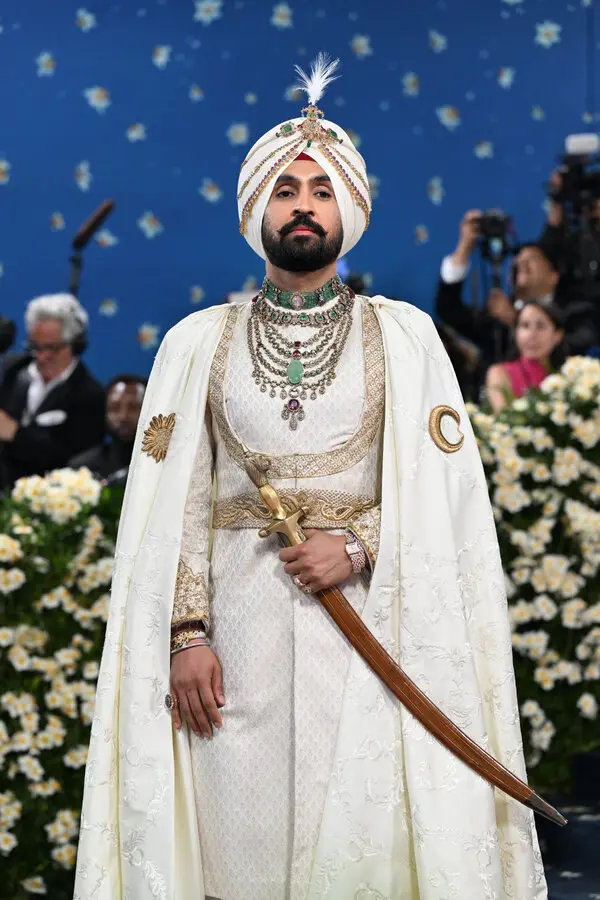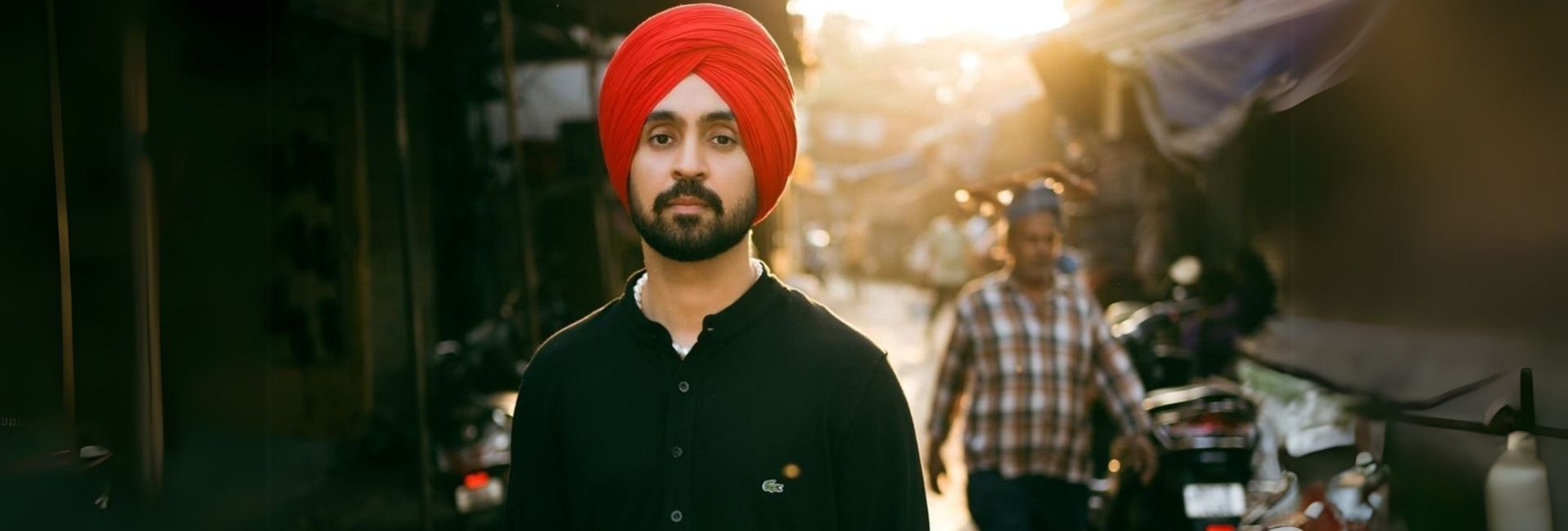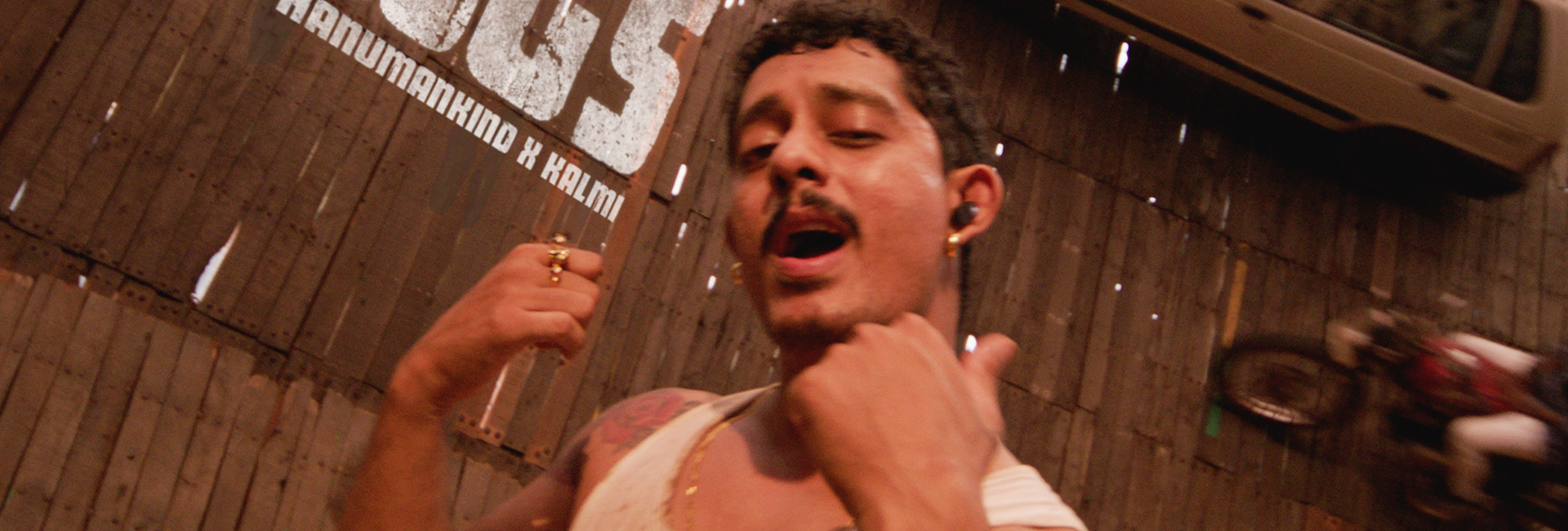(May 14, 2025) On the first Monday of May 2025, Diljit Dosanjh stepped onto the Met Gala red carpet in New York wearing a Prabal Gurung ensemble inscribed with Gurmukhi, taking Punjabi culture to center stage. The look—its flowing silhouette and ornate details inspired by the Maharaja of Patiala—made clear that he wasn’t just a guest, but a proud ambassador of his heritage. Two years earlier, he had become the first Indian artist to perform at Coachella, scripting history with Punjabi beats that electrified California and introduced Punjabi music to the world in a big way. In that instant, Diljit proved that the colours, sounds, and spirit of Punjab belong on every global stage, cementing his status as a global icon.
Village Roots—Gurdwara Kirtan, Tabla & Punjabi Pride
Born in 1984 in the village of Dosanjh Kalan in Punjab, from a young age, he found joy in music – singing kirtan at his local gurdwara and performing at village functions. At age 11, his life took a dramatic turn when he left his village to live with his uncle in the city of Ludhiana. The move was meant to give him better opportunities, but it also meant growing up largely on his own. Music became his companion and purpose.

Diljit Dosanjh at Met Gala 2025
By his teens, he was mastering the tabla at the gurdwara and honing his singing skills, laying the groundwork for what would become his lifelong passion. Those early years shaped his identity. “I’m very proud of Punjabi music,” he says. “I feel alive when I’m performing in my mother tongue.” This pride in his roots kept him focused as he started chasing bigger dreams.
Breaking Out in the Punjabi Music Scene
In 2003, he recorded his first song, and by 2005 he released his debut album Smile, which earned him recognition in the Punjabi music industry. At first, his style leaned towards traditional folk and bhangra, reflecting the music he grew up with. He gradually blended in modern influences, and the hits kept coming.
A turning point came in 2009 when Diljit collaborated with rapper Yo Yo Honey Singh on the album The Next Level, which found audiences in the UK, U.S., and Canada. Suddenly, he wasn’t just Punjab’s beloved singer – he was making waves in the Punjabi diaspora abroad. In 2011, one of his upbeat tracks Lak 28 Kudi Da became a smash hit, even topping the BBC Asian download charts – a first for a non-Bollywood Punjabi song. By his mid-twenties, Dosanjh had transformed into one of the top names in Punjabi music. Yet, he was only getting started on his journey.
From Singer to Actor: New Horizons
Diljit’s charisma and popularity opened the door to a film career. He made his acting debut in the 2011 with a Punjabi action film The Lion of Punjab, and quickly found success in Punjabi cinema with the romantic comedy Jatt & Juliet (2012) and the critically acclaimed drama Punjab 1984 (2014). These roles turned Diljit into a household name in Punjab.
View this post on Instagram
Bollywood soon took notice. In 2016, Diljit Dosanjh made his Hindi film debut with Udta Punjab, playing a down-to-earth Punjabi police officer in a story about Punjab’s drug crisis. The film’s success earned him the Filmfare Award for Best Debut (Male), a rare feat for a Punjabi singer-actor entering Bollywood. More Hindi films followed – from the comedy Good Newwz to the biopic Soorma – expanding his fame across India.
Throughout this crossover into films, Diljit never let go of music. He continued to drop Punjabi albums almost every year, even as his on-screen career flourished. “Music will always be my life… my main profession is music. I am a musician first,” he once said, underscoring where his heart truly lies. This dual success in music and movies set the stage for his next leap – bringing Punjabi artistry to the global arena.
Punjabi Beats on the Global Stage
By the late 2010s, Diljit Dosanjh had achieved what many only dream of in India. But his vision was bigger: he wanted to take Punjabi music worldwide. In 2020, he released his 11th album, G.O.A.T. (Greatest Of All Time), a swaggering title that he lived up to. The album cracked charts internationally – debuting at No.1 in India and even breaking into the top 20 in Canada. The music video for the title track amassed over 200 million views on YouTube, and Diljit’s face lit up a Times Square billboard in New York, a sure sign that his appeal had gone global.
The true watershed moment, however, came in April 2023 at the Coachella Valley Music and Arts Festival. Walking onto the stage in Indio, California, clad in a black kurta-tamba (lungi) with a matching turban and sneakers, Diljit made history as the first Punjabi-language artist ever to perform at Coachella. Even American DJ Diplo was seen enthusiastically bhangra-dancing in the crowd. During the show, Dosanjh proudly proclaimed, “Punjabi aa gaye Coachella oye!” – emphasising that this triumph was bigger than just him. It was about representation. He later explained that his performance was about representing his culture on a global platform, a sentiment shared by anyone who takes pride in their roots.
The Coachella performance went viral. Suddenly, global music fans who had never heard Punjabi lyrics were grooving to them. “Music is a universal language,” Diljit noted when talking about why his songs appeal beyond Punjabi speakers. “Music belongs to everyone… It knows no boundaries.” His point was proven on that Coachella stage – thousands danced even if they didn’t understand every word, caught up in the energy of the music.
The World Tour and International Fame
Fresh off the Coachella high, Dosanjh reached another milestone: a sold-out global concert tour. In 2024, his “Dil-Luminati” world tour set records across North America. The Punjabi superstar headlined arenas and even stadiums – something unprecedented for an artist singing primarily in Punjabi. In Vancouver, Canada, he drew a crowd of 54,000 to BC Place stadium, the largest audience ever for a Punjabi concert outside India. The tour’s North America leg alone saw about 215,000 attendees and grossed over $27 million, making it the biggest tour in history for a Punjabi music artist. It truly felt like a victory lap not just for him but for Punjabi music and the diaspora.
View this post on Instagram
What makes this achievement sweeter is that Diljit had envisioned it long ago. His very first trip abroad was to Canada in 2005 to perform at a small show. Seeing the huge stadium venues there, he set a personal goal. “When I arrived in Canada, that’s when I first saw the stadiums,” he recalls. “That’s when I decided that I will perform in a stadium one day… I just knew it.” Two decades later, he stood on those stadium stages, living that dream.
Diljit’s international profile kept rising. In 2023, he became the first Punjabi artist to appear on a major American talk show when he performed Born to Shine and G.O.A.T. on The Tonight Show Starring Jimmy Fallon. Fallon introduced him to the live TV audience as “the biggest Punjabi artist on the planet,” a nod to the remarkable stature he had achieved. Collaborations soon followed with global stars across genres. Pop legend Ed Sheeran invited Diljit on stage for a surprise duet of Lover during a Mumbai concert, and Diljit later joined Ed in England to sing Shape of You Punjabi-style.
He teamed up with rapper Pitbull for an upbeat Bollywood track, worked with American hip-hop artists like NLE Choppa and Saweetie, and even recorded Palpita with Latin Grammy-winner Camilo, blending Spanish and Punjabi lyrics. These projects showed how far Punjabi music could travel, with Dosanjh as an ambassador connecting East and West. “My goal is to spread Punjabi music all over the world. Punjabi culture is very rich and I want everyone to experience it.”
Diljit Dosanjh’s rise has been nothing short of extraordinary. He started as a village boy, left home to chase his dream, and fought his way through a tough music industry to perform on stages no Punjabi artist had before. All the while, he stayed true to himself—singing in Punjabi, wearing his turban with pride, and celebrating his culture. Now, he stands as a global representative of India and Punjab without ever losing his roots.
At the Met Gala, Diljit Dosanjh’s look — adorned with Gurmukhi— was more than a fashion statement; it was proof that Punjabi culture belongs on the world’s biggest stages. From Coachella to sold-out arenas, he’s shown that a song in your mother tongue can unite crowds everywhere. His rise from a village boy to global icon reminds every young artist that you don’t have to lose yourself to find success. “I come from a small town,” he says. “If I can do this, they can do even better than me.”
- Follow Diljit Dosanjh on Instagram
Also Read: Punjabi-Reggae Revolution: How a search for identity led to the birth of ‘British Bhangra’
Also Read: Anokha Sound: How the Asian Underground became a voice for immigrant identity




